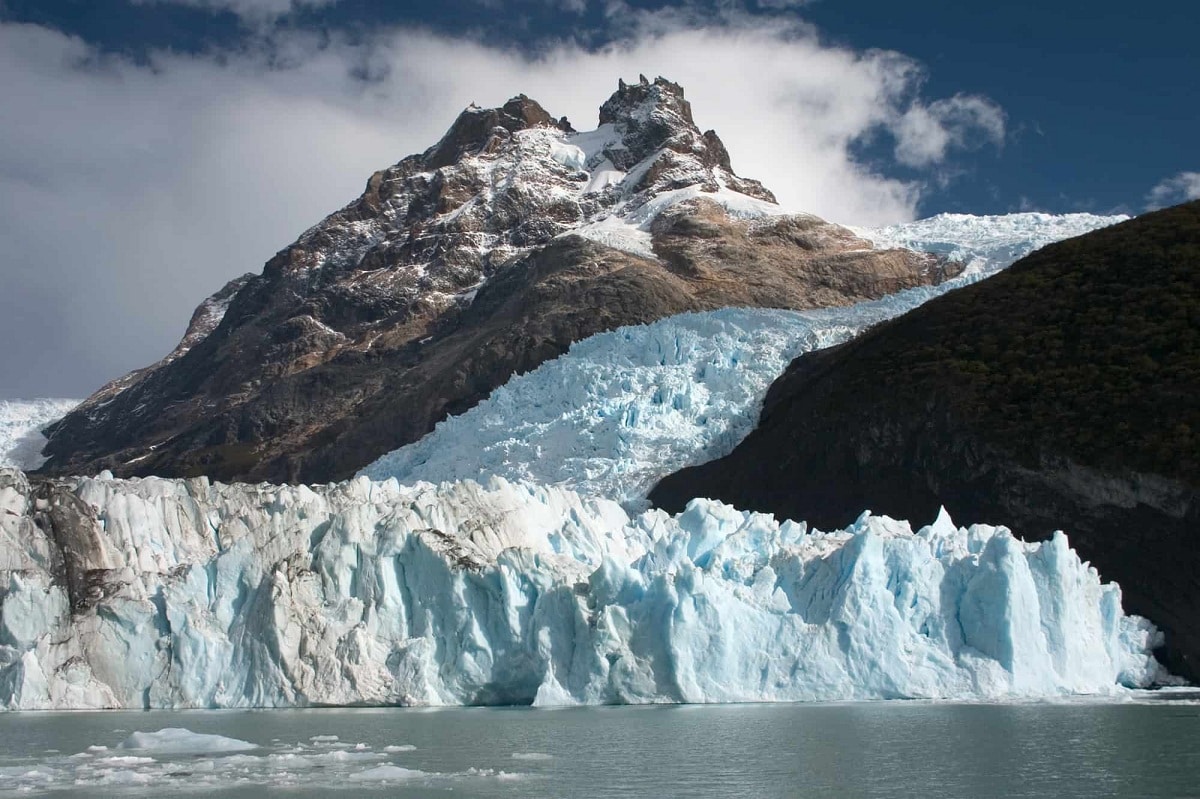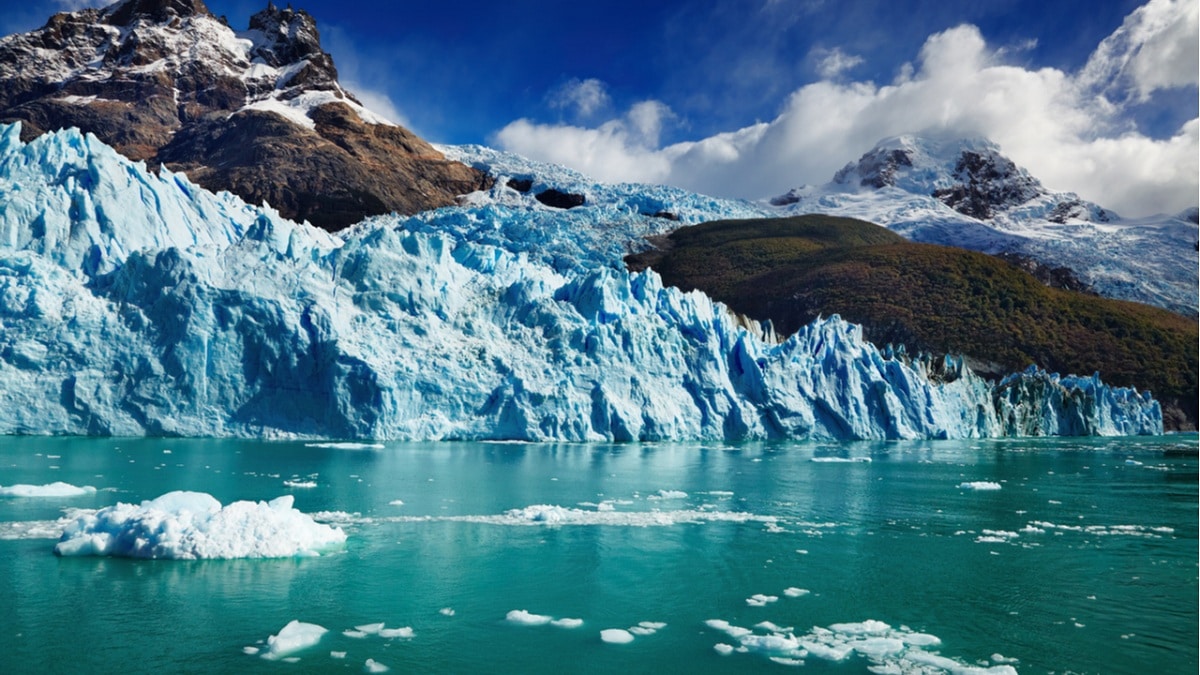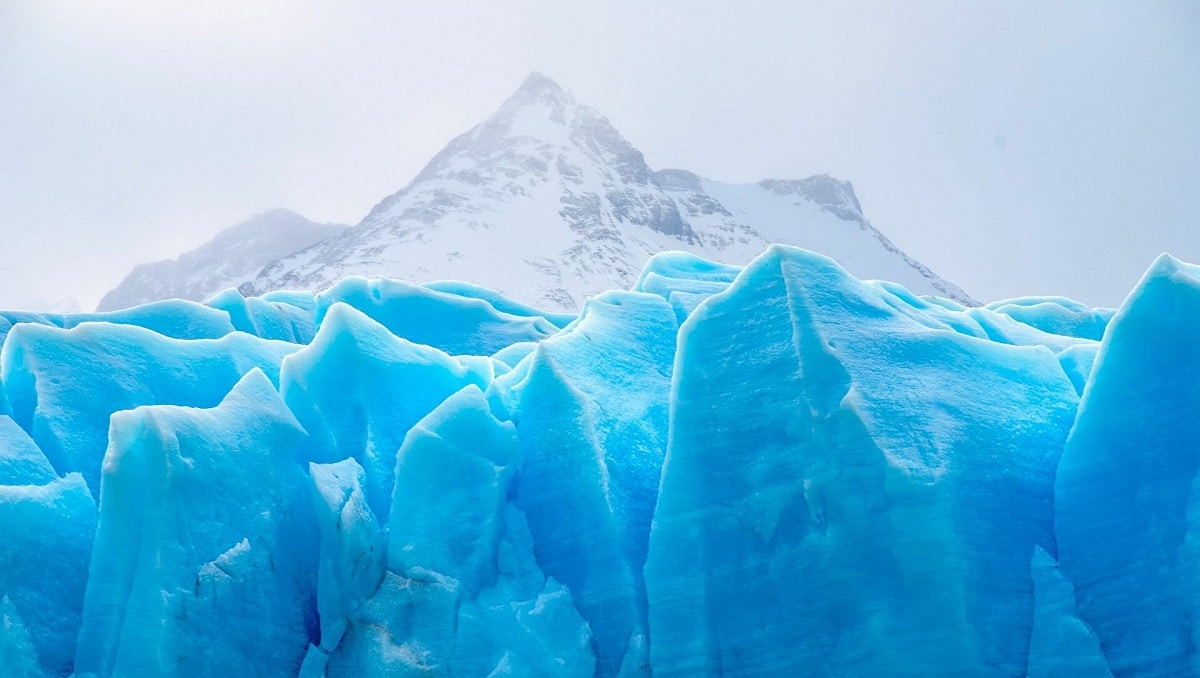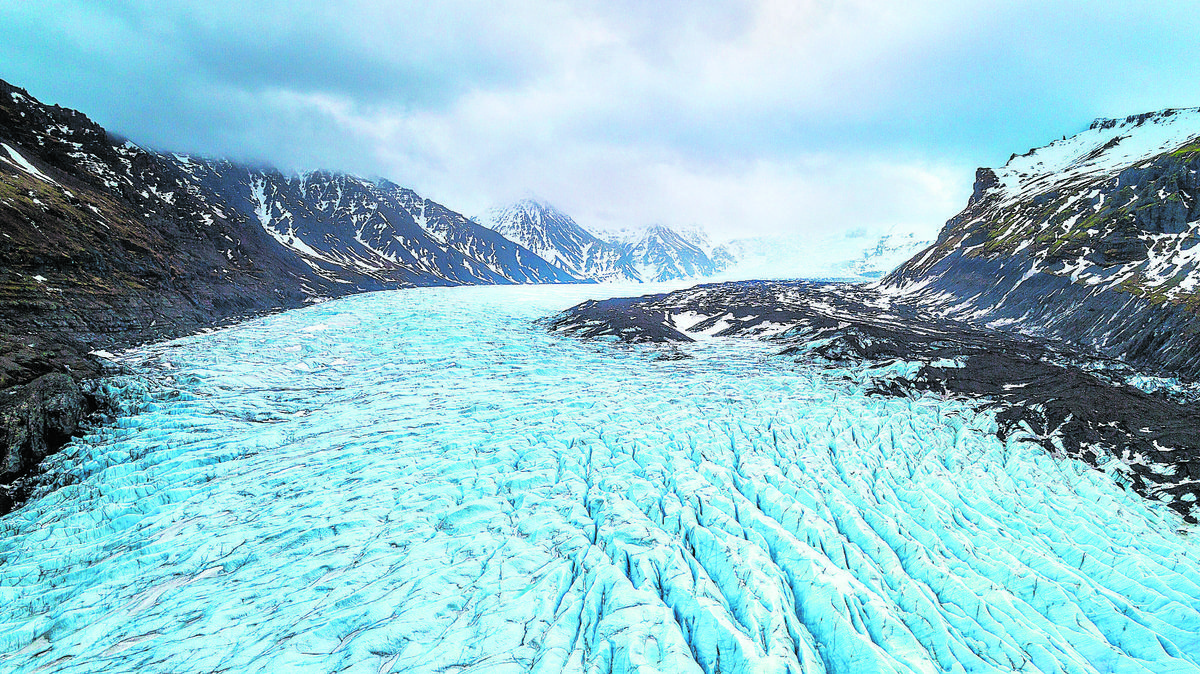
Glaciers are compressed masses of ice that form over thousands of years. Continuous snow fall and low temperatures below 0 degrees continuously cause snow to accumulate in the same place causing it to transform into ice. Glaciers are the largest objects on our planet and although they seem fixed, they move. They can flow very slowly like rivers and pass between mountains creating crevasses and glacial relief. They can also form rocks and lakes.
In this article we are going to tell you everything you need to know about glaciers, their origin and their characteristics.
What is a glacier

A glacier is considered to be a remnant of the last Ice Age. At this time the low temperatures forced the ice to move towards the lower latitudes where the climate is now warmer. At present, we can find different types of glaciers in the mountains of all continents except Australia and some oceanic islands. Between latitudes 35 ° north and 35 ° south glaciers can only be seen in the Rocky Mountains, in the Andes, in the Himalayas, in New Guinea, Mexico, East Africa and on Mount Zard Kuh (Iran).
They are the amount of surface that the glaciers occupy that approximately constitutes 10% of the entire land surface of the planet. Normally they usually appear in high mountain areas because the environmental conditions are conducive to it. That is, there are low temperatures and high rainfall. We know that there is a type of precipitation that is known by the name of mountain precipitation, which occurs when the air rises in altitude and ends up condensing and rain falls at the top of the mountains. If the temperatures are below 0 degrees continuously, these precipitations to be in the form of snow and they will end up depositing until they form glaciers.
The glaciers that appear in the high mountain and polar regions are given different names. Those that appear in the high mountains are called alpine glaciers while glaciers at the poles are known as ice caps. During the warm seasons, some release meltwater due to its melting, creating important bodies of water for fauna and flora. In addition, it is very useful for humans since this water is used for human supply. It is the largest reservoir of fresh water on the planet, containing up to three-quarters of it.
Training
Let's see what are the main steps that take place for the formation of a glacier. It consists of the permanence of the snow in the same area throughout the year. If the area has consistently low temperatures snow is stored until ice is formed. In the atmosphere, all the water vapor molecules stick to small dust particles and form crystal structures. It is then that other water vapor molecules adhere to the crystals formed and the characteristic snowflakes that we are used to seeing are formed.
Snowflakes fall in the highest part of the mountains and are stored over time after continuous snowfall. When enough snow is accumulated, ice structures begin to form. Year after year the weight of the new layers of snow that is accumulating compacts the structure of the ice much more and causes the snow to crystallize again since the air between the crystals shrinks. Each time the crystals get bigger and the packed snow increases its density. The some points succumb to the pressure of the ice and begin to slide down and they form a kind of river that at the end of each a U-shaped relief.
The passage of glacier through the ecosystem generates a relief known as glacial relief. It is also known as glacier modeling. The ice begins to reach an equilibrium line in which above the line you gain more mass than you lose but below you lose than you win. This process usually takes more than 100 years for it to take place.
Parts of a glacier

A glacier is made up of different parts.
- Accumulation area. It is the highest area where snow falls and accumulates.
- Ablation zone. In this zone the processes of fusion and evaporation take place. It is where the glacier reaches the balance between increase and loss of mass.
- Cracks. They are the areas where the glacier flows faster.
- Moraines. These are dark bands formed by sediments that form on the edges and tops. The rocks dragged by the glacier are stored and formed in these areas.
- Terminal. It is the lower end of the glacier where the accumulated snow melts.
Types of glacier that exist
The and glacier can be classified in numerous ways although it depends on its modeling and its formation. Let's see what are the different types that exist:
- Alpine glacier: It is also known by the name of mountain glacier and are those that are generated in high mountains by the accumulation of snow.
- Glacier circus: it is a basin in the shape of a crescent where the water accumulates little by little.
- Glacial lakes: they are water deposits that originate in the depressions of the valley and there are times when they are frozen and others when they are not.
- Glacier valley: this result of the erosive action of the glacial tongue. It usually has a U-shaped valley and generates elongated rock formations.
- Inlandis: they are huge masses of ice that completely cover the entire terrain and end up moving through the dynamics to the sea.
- Drumlins: They are mounds that are formed by sedimentary material that the glacier has dragged along its movement.
I hope that with this information you can learn more about the glacier and its characteristics.
